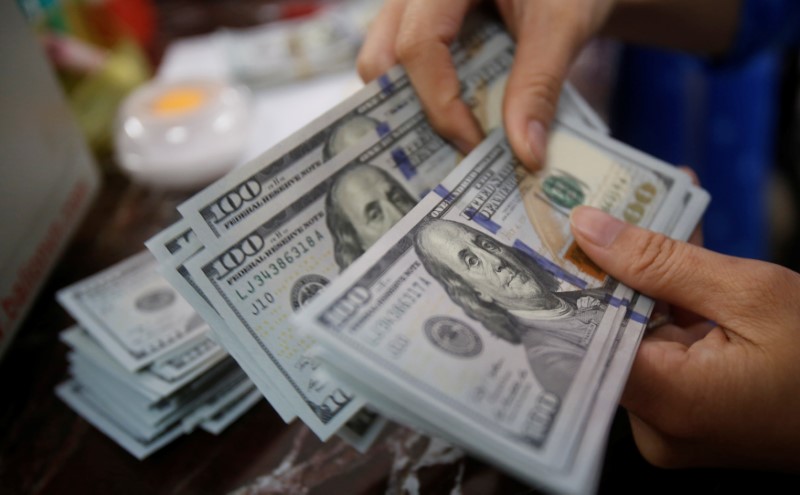(Updates prices)
* Dollar steadies after slide to 4-1/2 month lows
* Eyes still fixed on stock market sentiment
* Iron ore dip hurts Aussie
* Graphic: World FX rates in 2017 http://tmsnrt.rs/2egbfVh
By Patrick Graham
LONDON, March 28 (Reuters) - The dollar steadied on Tuesday after its worst week since U.S. President Donald Trump's election in November, promises of more rises in Federal Reserve interest rates this year helping it recover from multi-month lows in still shaky global markets.
A dip in iron ore prices helped weaken higher-risk currencies including the Australian AUD= and Canadian dollars, with eyes also shifting to an appearance by Bank of Canada Governor Stephen Poloz. CAD=
The index that measures the broader strength of their U.S. counterpart .DXY was trading almost half a percent above Monday's four-and-a-half month low but up just 0.1 percent on the day after a volatile overnight session in Asia.
The yen, which has gained 4 percent in nine days as faith erodes in the Trump White House's ability to deliver tax reform and a promised public spending boost, was flat at 110.74 yen per dollar. JPY=
Analysts pointed to support from appearances by Dallas Federal Reserve Bank President Robert Kaplan and Chicago Fed chief Charles Evans as putting the emphasis back on the prospect of more rises in U.S. interest rates.
"Clearly we shouldn't forget we are going to see at least two more hikes by the Fed this year and that there is still the potential for the next one to be pulled forward to June," said CIBC strategist Jeremy Stretch.
"There is probably also a realisation that after the vote on Friday, it may well be the case that Trump's moving away from healthcare reform and towards fiscal issues may be constructive from a market perspective."
The Republicans' failure to pass a replacement for Obamacare was the trigger on Monday for a deepening of doubts about the Trump administration's ability to pass other legislation through Congress.
Masafumi Yamamoto, chief forex strategist at Mizuho Securities in Tokyo said those concerns meant the bias remained towards more dollar weakness.
"But a one-way drop by the dollar is also unlikely as the Republicans cannot face midterm elections in November of next year without enacting a single fiscal stimulus step," he said.
The euro was down just 0.1 percent at $1.0854 EUR= , after reaching $1.0906 in the previous session, its highest since Nov. 11.
The Aussie, battered by the weakening in global sentiment and a fall in the prices China pays for its iron ore, was down 0.3 percent. AUD=
Ahead of Poloz's appearance around 1400 GMT, the Canadian dollar was also a quarter of a percent weaker on the day at $1.3404.
For Reuters Live Markets blog on European and UK stock markets see reuters://realtime/verb=Open/url=http://emea1.apps.cp.extranet.thomsonreuters.biz/cms/?pageId=livemarkets
(Writing by Patrick Graham; editing by Richard Lough and Ed Osmond)
